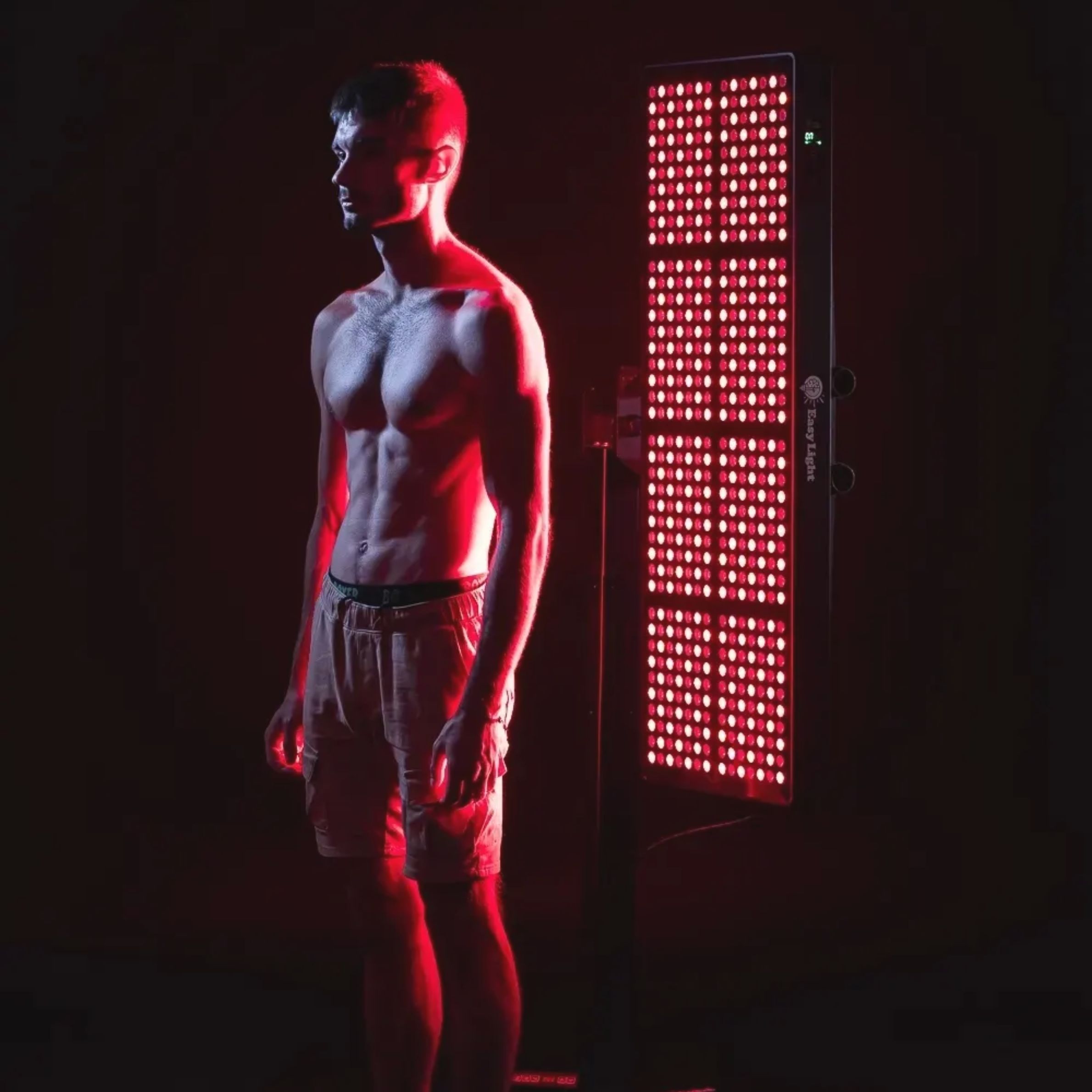What is mitochondria, how they produce energy, and how to support them
Mitochondria are tiny “power plants” inside our cells that work even while we sleep. Their main functions are to produce energy and water. How can we support mitochondria with red light and what do they do for us? Let’s take a look.
What mitochondria are and what they make
Mitochondria are like our tiny “power plants” in cells. They have their own inner membrane and a special environment called the mitochondrial matrix. Their main role is to make energy for the body in the form of ATP (adenosine triphosphate) and also water. They also produce light themselves (so-called biophotons) and the important hormone melatonin, as you can see in the simple explainer video.
When mitochondria work well, we feel strong and healthy.
The respiratory chain in a nutshell
Inside mitochondria runs the respiratory chain (ETC – the electron transport chain). It’s a series of steps where electrons pass through four “stations” — Complexes I to IV. Think of a ladder, where electrons step down rung by rung. At each step, protons (H⁺) are pumped across the membrane. This creates a difference — a kind of battery-like voltage. And this “battery” then powers us with energy.
The turbine that makes ATP
When the “voltage” is high enough, protons flow back through the enzyme ATP synthase. That’s our biological turbine. It spins and joins ADP with phosphate. The result is ATP — the cell’s universal energy. At the same time, water (H₂O) is formed in mitochondria — it’s very structured and dense. This water behaves like a battery.
Energy + water = the basis of life in every cell.
“Special” water without heavy hydrogen = deuterium-depleted water
The water formed in this process is different from regular drinking water. It’s “lighter” because it contains less deuterium (deuterium = heavy hydrogen). It’s called deuterium-depleted water (DDW). Such water behaves more efficiently inside the cell. It helps maintain order, signal transfer, and the smooth operation of mitochondria. Only when we have enough of this water are mitochondria hydrated and working properly.
Red light supports mitochondria
Red and near-infrared light are very beneficial for mitochondria. They improve the inner conditions, support the water environment, and aid the respiratory chain. Light and water thus go hand in hand with our energy.
That’s also why we chose the name Mitochondriak and call ourselves Mitochondriacs — we focus first on mitochondria, light, and water. When we support these three pillars, the body has better fuel and performance — and we can be healthy!
Summary:
From the moment you put food in your mouth to energy production in the body, it goes like this: electrons pass through the four complexes of the respiratory chain → protons are pumped → the “turbine” (ATP synthase) spins → ATP and “lighter” water with less deuterium are produced.
The key point is that red and near-infrared light support this process. Simple, natural, and effective. That’s why you should spend as much time outside in natural sunlight — and indoors you can support this process with suitable infrared panels, for example Mitochondriak®.
.png)

.jpg)
.jpg)